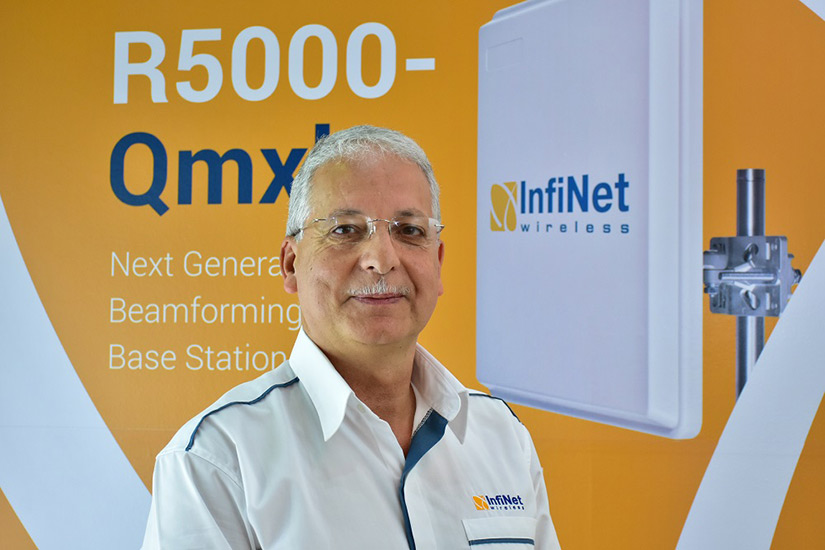Article by Kamal Mokrani, Global Vice President, InfiNet Wireless
We now find ourselves steeped in the fourth Industrial Revolution – an era that could potentially see every one of us, and every piece of machinery we use, seamlessly networked together. Every aspect of our lives, from our classroom experiences to our daily commute, is being digitised as we move inexorably towards the smart city paradigm.
But unlike the jetpacks and flying cars we looked forward to in the 1980s, smart cities are not only more viable, but are taking shape around us as you read this. For example, governments within the Gulf Co-operation Council (GCC) have shown unparalleled ambition in creating these digital societies, embarking on long-term economic visions that leverage technology to lay the foundations for smart cities, as evidenced by the region’s conference venues becoming regular hosts for smart city themed events, all aimed at creating awareness and igniting the spirit of innovation.
The way forward
So, what is the blueprint for the smart society? What constitutes best practice? And how can we ensure the foundations are sound enough to support value-adding solutions that revolutionise everyday life?
The first thing to recognise is that legacy cable infrastructures can only take the smart-city pioneer so far. Many of the unique selling points of smart cities involve the necessary feature of mobility. Traffic optimisation, automated public safety and remote health monitoring are just three examples where key elements of the ecosystem (such as vehicles, CCTV cameras, people, etc.) can be anywhere, with data made available to/from them in real time. Hard-wired solutions severely hamper the delivery of such solutions.
In addition, these cabled solutions are extraordinarily disruptive in their deployment, requiring significant undertakings from the perspectives of both civil engineering and the public purse. Both factors also amount to considerable lifespans for cabling projects, thereby dampening the momentum of smart city initiatives.
Wireless presents itself as an obvious candidate for any government intent on crafting its own smart city. But care must be taken when selecting the platform on which all future smart solutions will be built. Choose the wrong one, and visionary advances could quickly grind to a halt.
Mobile matters
According to GSMA Intelligence’s 2017 Mobile Economy report, mobile Internet subscriber penetration in sub-Saharan Africa reached 44% in 2016 and is projected to top 50% by 2020. The report also states that smartphone adoption reached 28% in 2016, which is expected to increase to 50% by 2020.
Figures like these call out for diligence when selecting wireless platforms built for the future, as many smart city solutions involve continuous data feedback to/from citizens, as well as municipal authorities. Certainly, significant capacity is required to serve the rising numbers of connected citizens and their associated mobile devices. Always-on reliability is a standard assumption among solutions providers and government innovators. And flexibility in configuration is also a must, so that policy-makers and enterprises can respond quickly to unexpected shifts in citizens’ behaviour.
An effective smart infrastructure also needs to enable split-second decision making, in the order of 3ms or lower for most known applications today. Adopting a 3G platform with latencies in excess of 100ms, clearly will not meet the stringent requirements of anything ‘smart’. And 4G networks only reach 50 or 60ms in latency. Even 5G, projected to deliver response times of between 1 and 5ms, will be delivered as a series of shared networks, used by millions of consumers and businesses, coming with all the known bottlenecks at different times of the day.
Quality of service
A suitable, quality of service, mobile Internet solution needs to be IP-based, provide guaranteed delivery of each and every packet and be capable of connecting seamlessly to any data source and any current or future sensors. Consider the CCTV-based public safety system mentioned earlier. Real-time image-processing is computationally expensive. Low latency, reliability of data transfer and fast processing capabilities come together to deliver features such as instant facial recognition, automatic number plate recognition (ANPR) and a host of other crowd-based analytics services that ultimately translate into safer and more secure environments.
The above examples also illustrate the need for any smart infrastructure to mitigate interference and radio noise, especially as the number of wireless networks will undoubtedly increase within the fledgling smart city as more services are rolled out. Failure to do so will lead to a degradation in accuracy and reliability of the data transfers. The more interference there is, the less desirable the results from real time analytics engines.
Stay the course
Our journey towards the smart cities of tomorrow must be less of a sprint and more of a methodical march. Healthcare, education, security and public safety all await the innovators. Their solutions – if built on the back of a robust, flexible, responsive and reliable wireless platform – will usher in that new smart city age we have all been waiting for.


